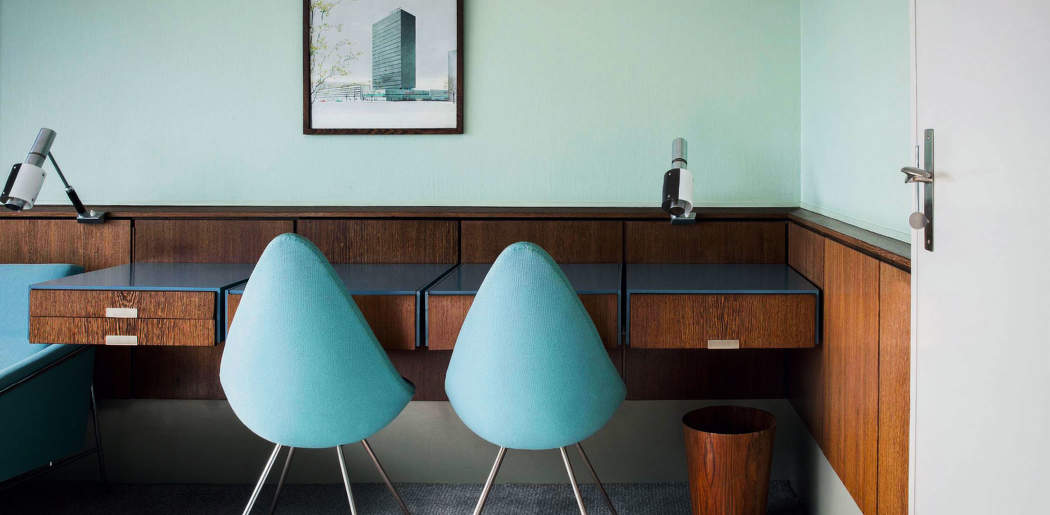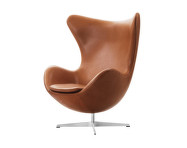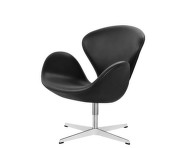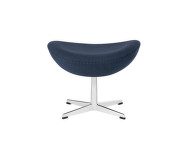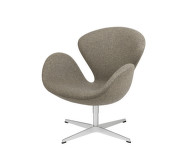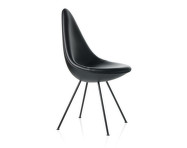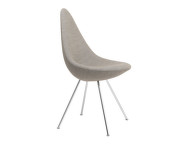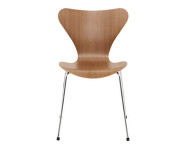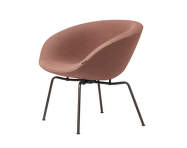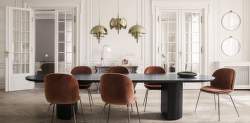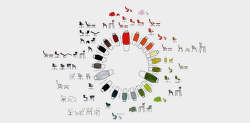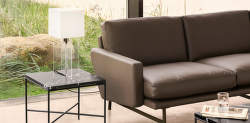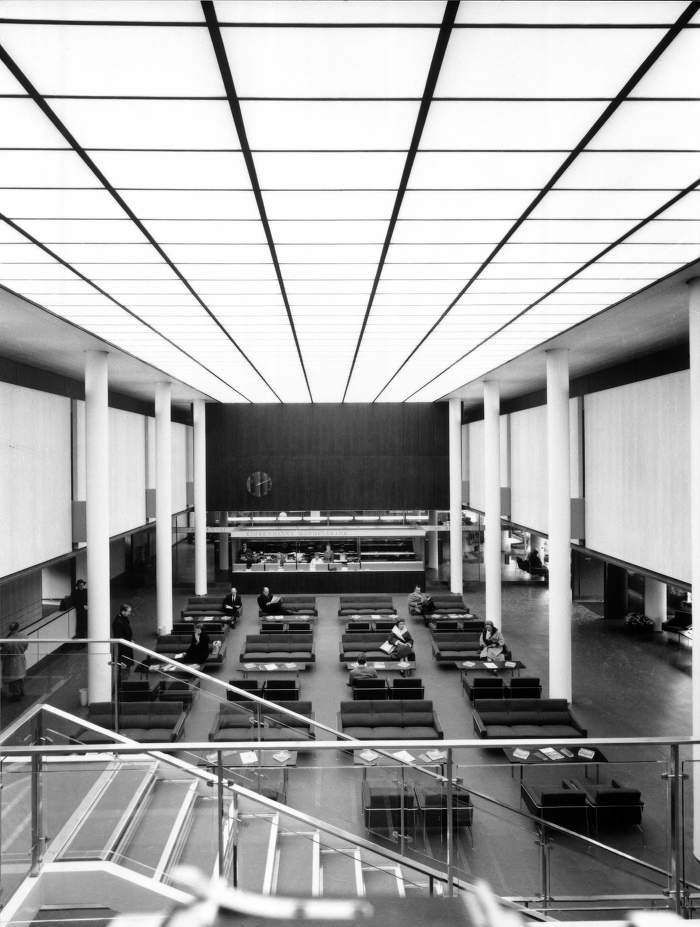
Arne Jacobsen, a modernist and functionalist, created the hotel for the Scandinavian airline SAS. In 1960, one of the most significant structures of the day was opened. The building was the first of its kind, and up until 1969, at 70 meters, it was the tallest structure in Denmark. Also, it was a pioneering design hotel.
It is also possibly the final example of a Gesamtkunstwerk, a single, artistically cohesive undertaking created primarily by a single artist in which each element of the building and the whole thing come together to communicate a single idea. A single designer was in charge of everything, from the salad fork to the building's framework.
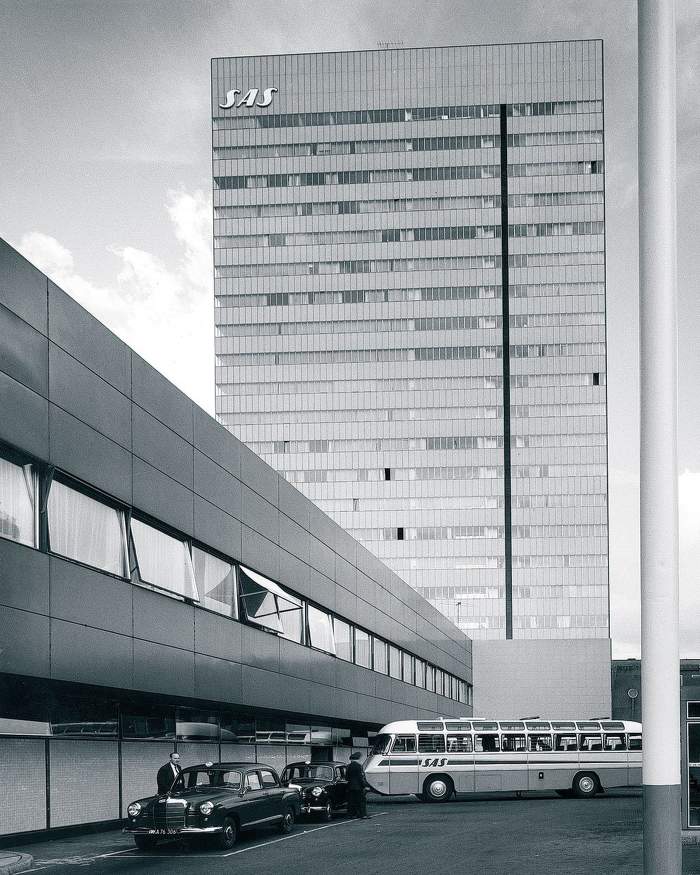
A display of the era's accomplishments
Jacobsen's work was characterised by a desire for forms that were ideal for people's diverse activities. This was made possible by the colors and shapes he chose to close the gap between the occupants, their surroundings, and their perception of it. He also thought about how to place the tall, futuristic-looking SAS Hotel in the city's historic surroundings, given its minimalist design. The work's detractors shared this worry. They were aware of Jacobsen's intentions and the hotel's design because sketches of the structure had already been published in nearby publications. The hotel has been referred to as the concrete cigarette box and the punched label, among other titles.
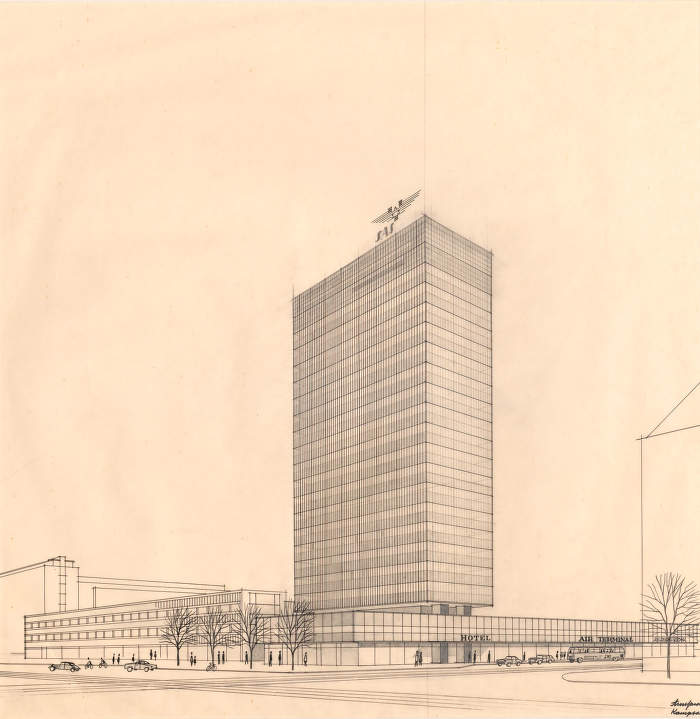
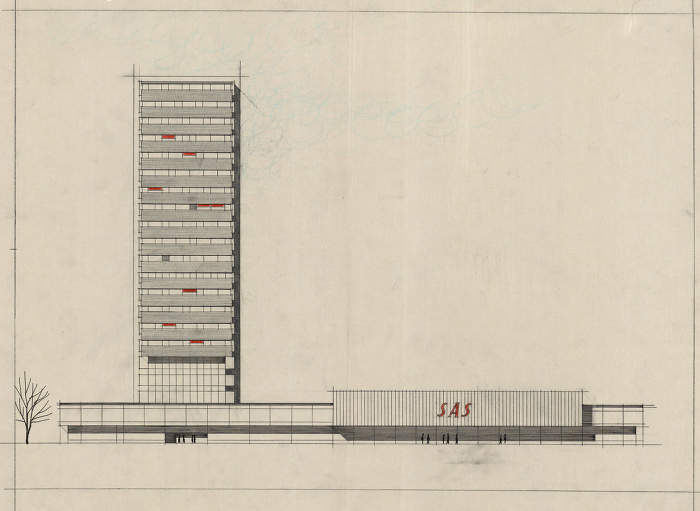
Arne Jacobsen ultimately chose to conceal all of the building's structural and supporting components inside of it, which allowed him to create a lightweight appearance even for high-rise structures. He decided to use glass as the exterior's primary material. The hotel's walls serve as a reflection of the area around them, which gives them special significance. One cannot not but recognize Mies van der Rohe's aesthetic influence in this area.
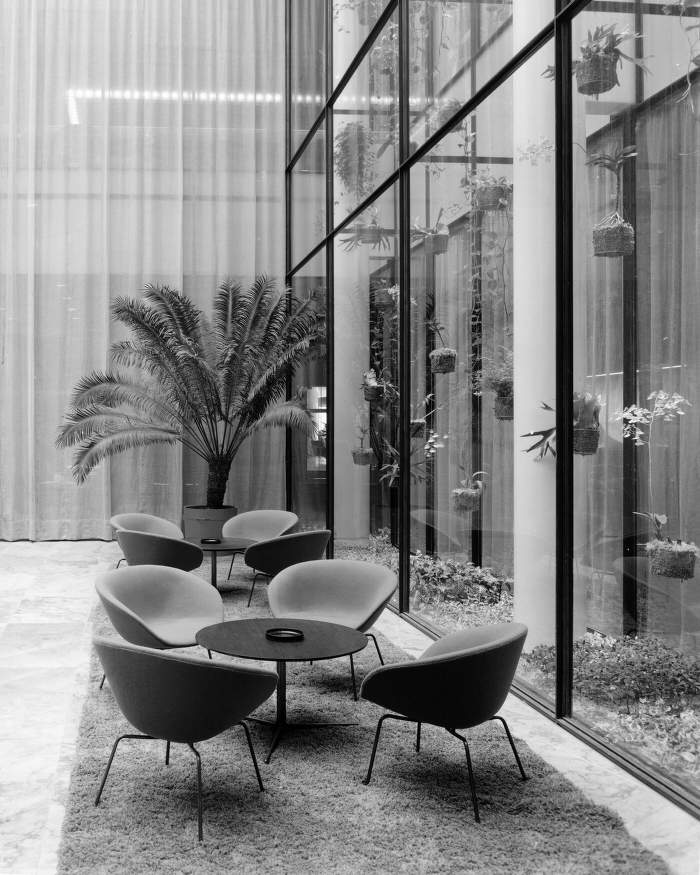
Mies was not the only one who inspired Jacobsen. Also, he was influenced by Le Corbusier's love of tall structures, Adolf Loos' dislike of ornamentation, and a widely held dislike of cheaply made industrial goods. Despite using cutting-edge technology, Jacobsen strove to portray the spirit of the era in all of his methods, which led to an intriguing paradox.
It was precisely this effort that made him so much ahead of his time, which the SAS Hotel embodied and therefore still recalls today. Examples include the technology of the sliding lamps on rails, which are preserved in the iconic room number 606, or the aforementioned Egg chair, which shape and curved lines were not technically possible until then.
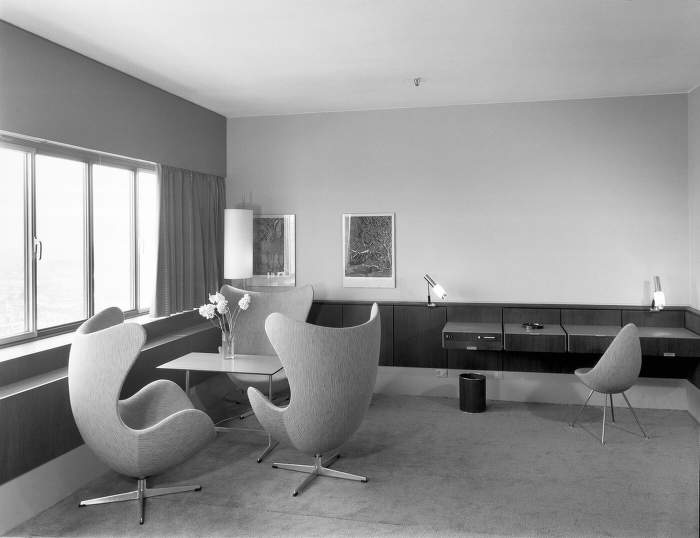
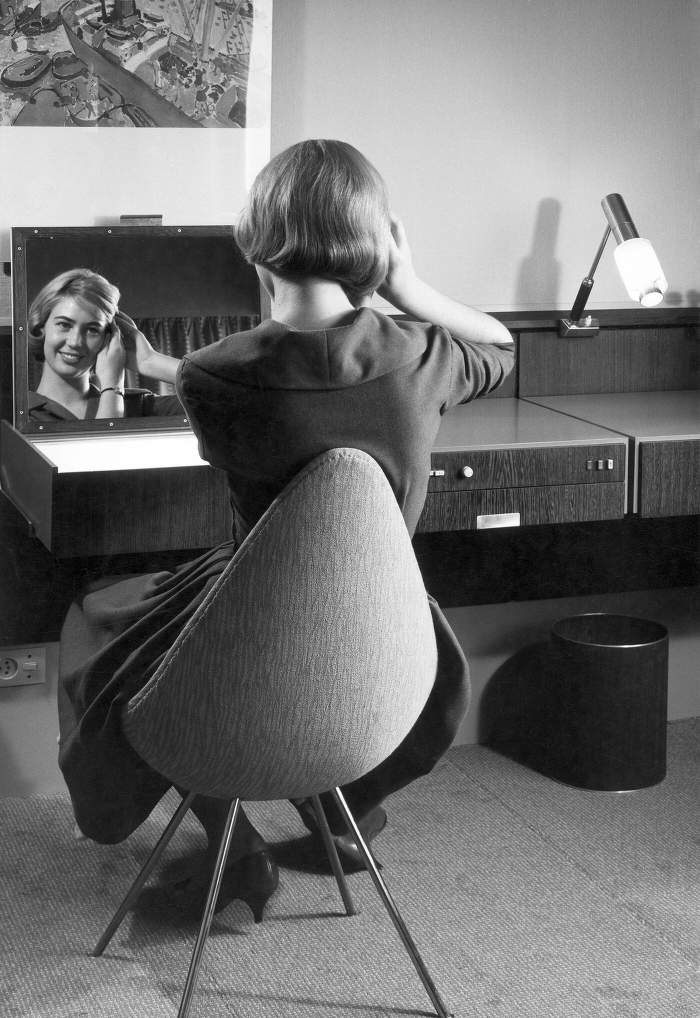
Furniture in symbiosis with the place
The building consists of two separate blocks that sit on top of each other. One points upwards, the other follows the lines of the streets. To disrupt the otherwise austere concrete and strictly rectangular spaces, Jacobsen designed furniture with pleasingly rounded shapes. However, this is not simply an extension of the Bauhaus geometric alphabet on which he based his designs; rather, we can look for an attempt at a spiritual and visual interplay of forms.
Organic shapes in contrast to strict geometry, rounded versus angular. Every aspect of the hotel's design, outside and inside, was devised purely for this one building. Yet countless of the designs have made a global name for themselves outside its walls, pieces like the aforementioned Egg Chair, the Swan sofa and the even more exceptional Series 7 i Drop chairs are ever-present.
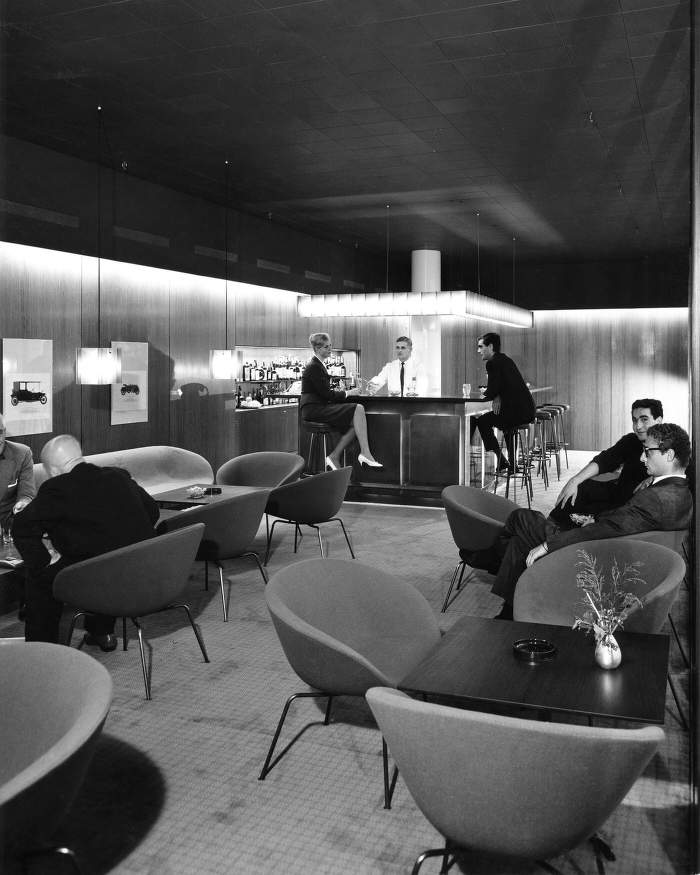
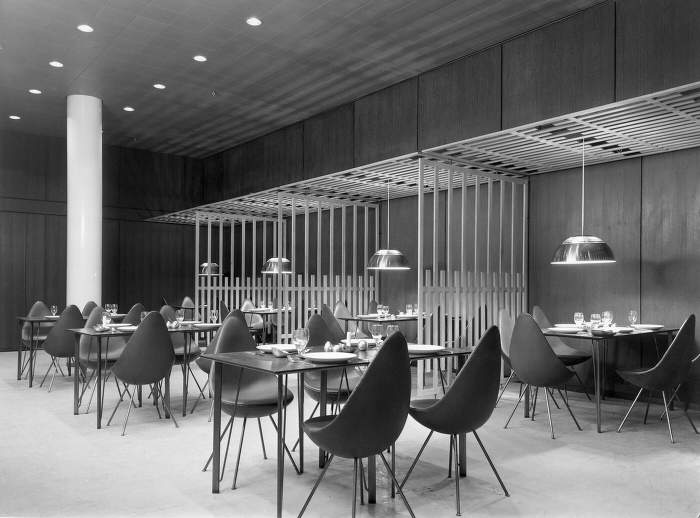
The rounded shapes of the Egg and Swan chairs have served the artist particularly well in creating the atmosphere in the lobby area with its famous suspended staircase. Jacobsen worked very artfully with space and furniture placement, the lobby and the rest of the space were not too crowded. Vintage photographs show chairs grouped on rectangular carpets just large enough to allow the grey floor to stand out, which becomes the imaginary red thread throughout the space.
Even superfluous accessories or chandeliers do not disturb the view. The feeling created by the floating staircase is enhanced by the two-storey conservatory, through which Jacobsen has tried to combine industrial and natural elements. Later he applied this connection to different structures.
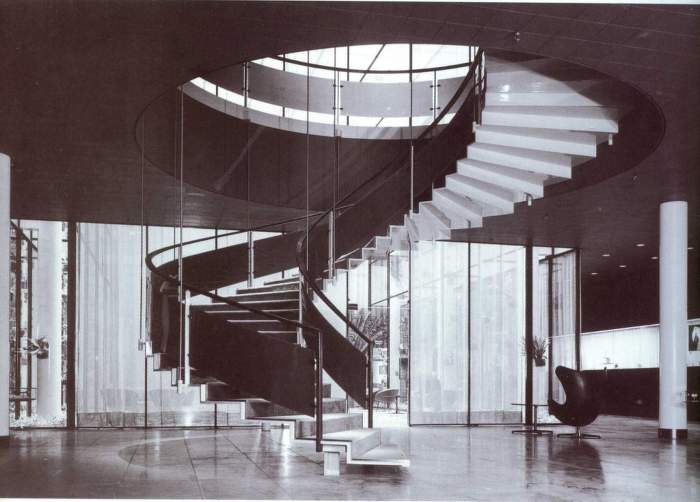
How Arne Jacobsen thought about his work is also evident when we look at the colour palette used. The dominance of certain shades was another way of bringing the space and its visitors together. Jacobsen used mainly green-grey-blue shades. In the same vein, he also designed a range of fabrics tailored to the hotel.
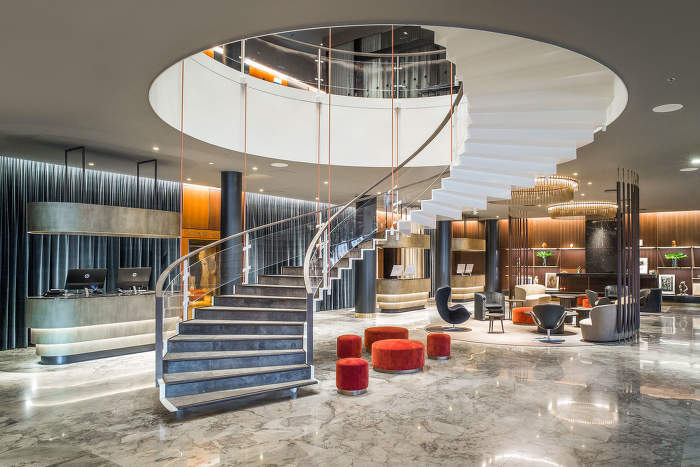
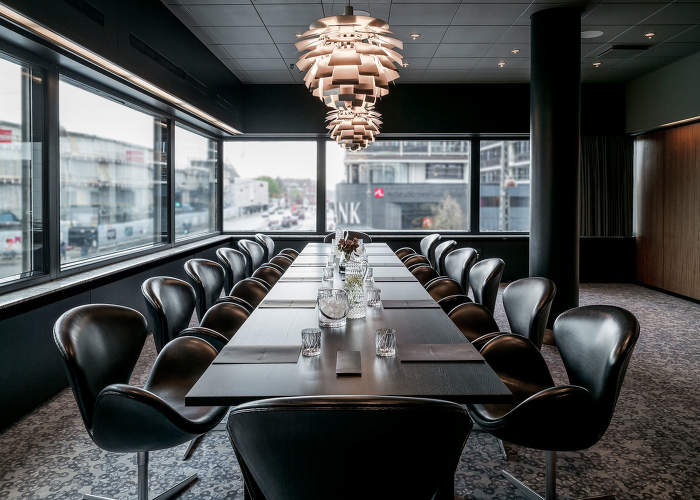
Although the hotel has undergone numerous renovations, Jacobsen's original colour vocabulary is still preserved in room 606. In fact, it remains unchanged and can still be spent the night there to this day. If you're ever near the heart of Copenhagen, we definitely recommend a peek at the hotel to see what Arne Jacobsen's work looks like years later. Additionally, if you like to intersperse your architectural and other experiences, you can visit the hotel's Café Royal, where you'll find drinks named after the masters of design.
